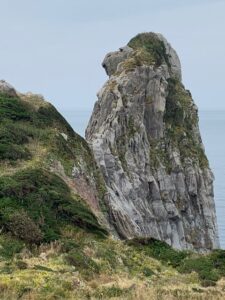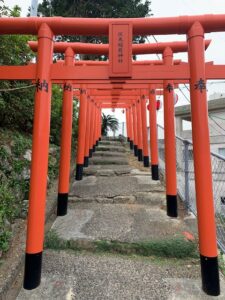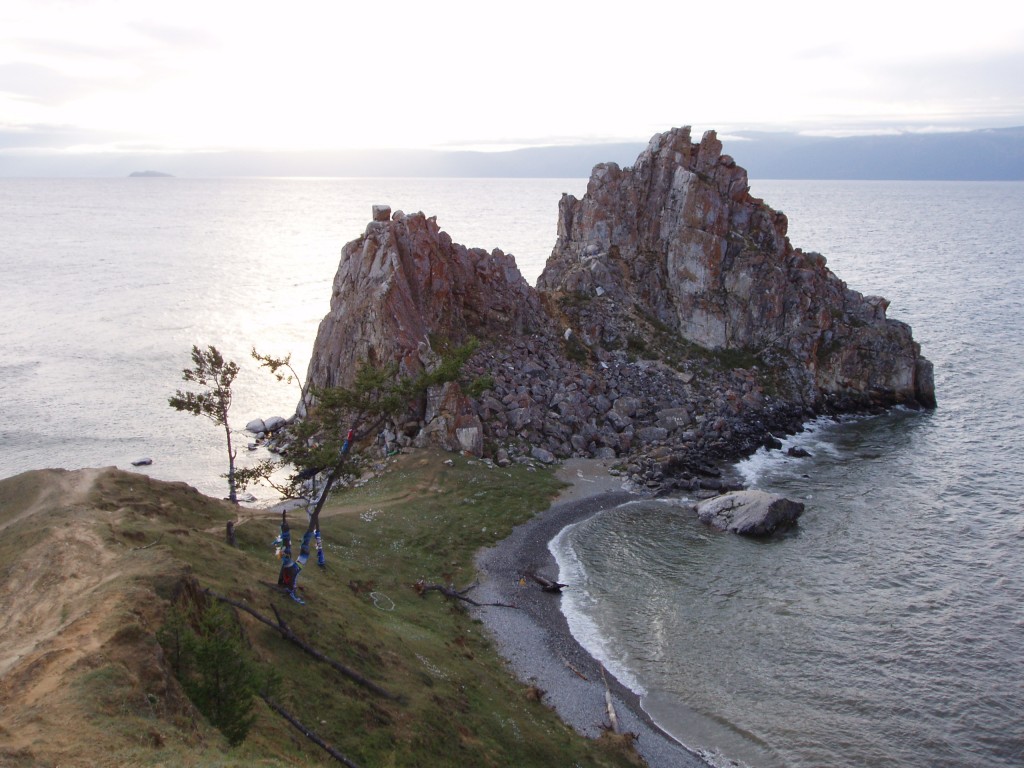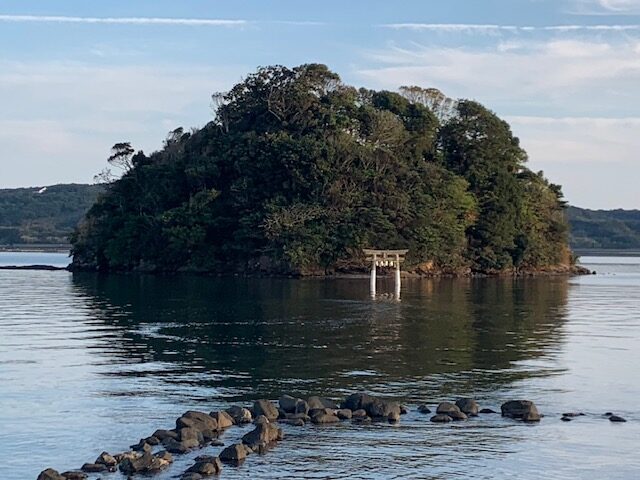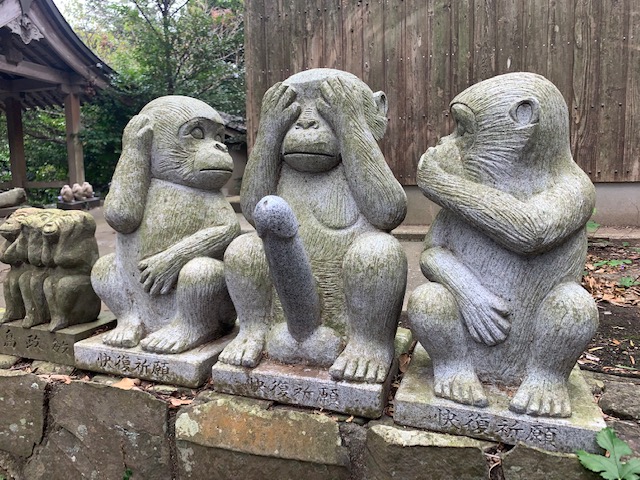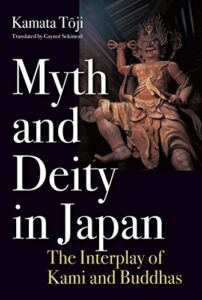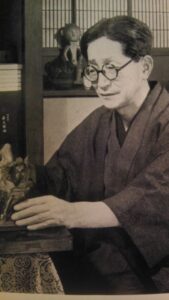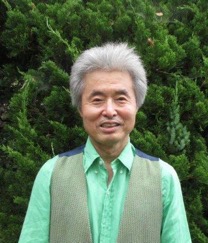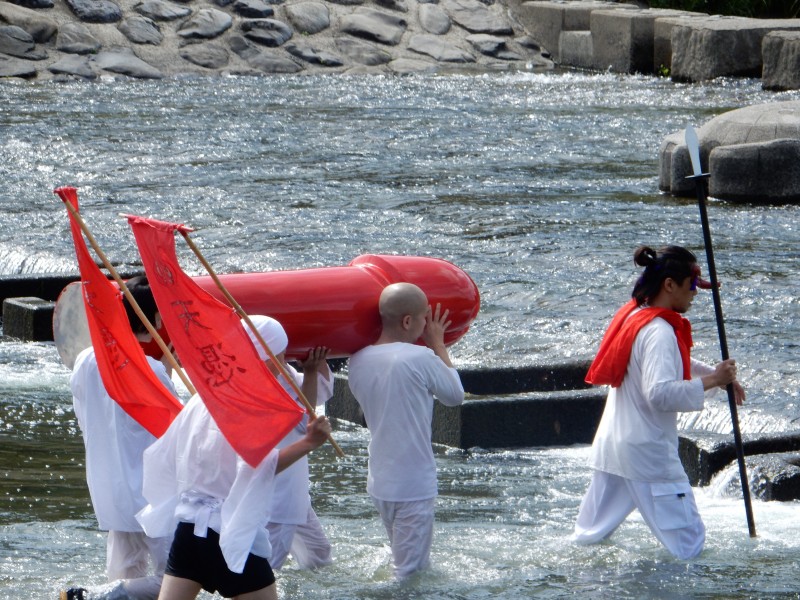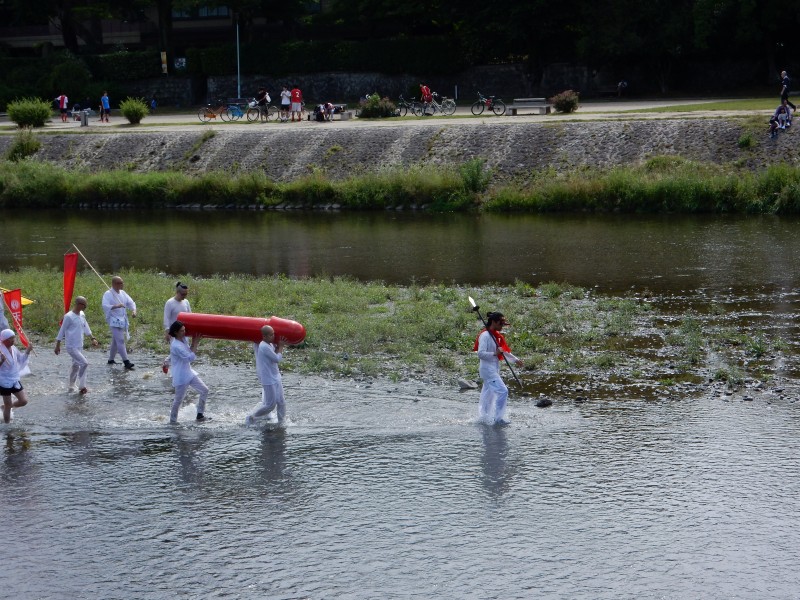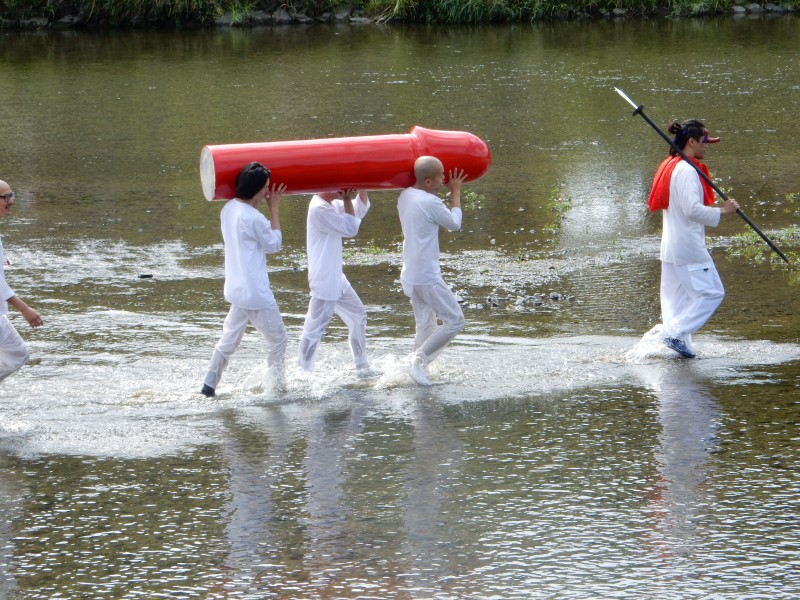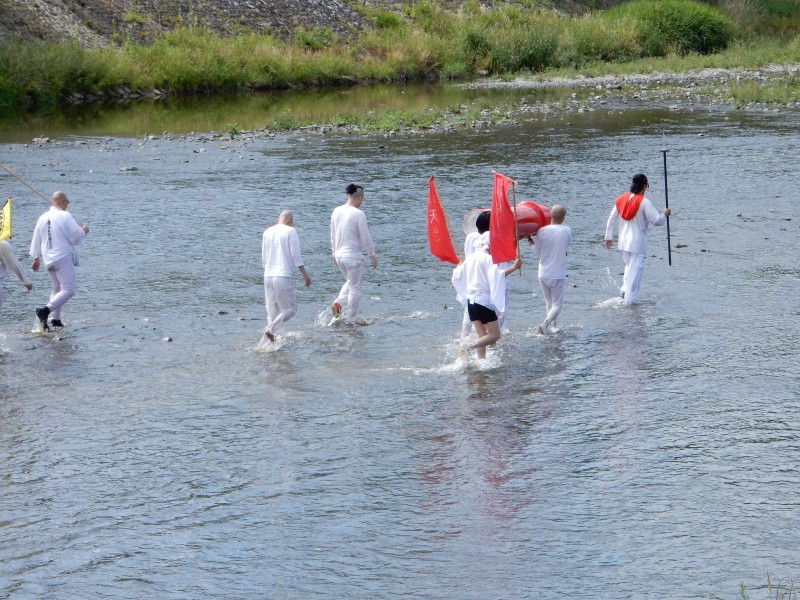For those interested in Shinto, Iki is a very special island. Palm trees and a Shinto torii greet visitors, and a welcome poster announces that this is ‘the island of kami’. A brochure promoting the island even claims that here lies the origin of Shinto. I was fortunate in my visit in that a Canadian friend Chad Kohalyk was living on the island and kindly offered to drive me around. He proved an excellent guide.
*******************
The next day Chad had devised a custom-made tour for me. First and foremost was the island’s prime attraction, Monkey Rock. No prizes for guessing why. In fact the likeness was uncanny. Shaped by wind and salt water, the creature looks pensively towards the horizon, as if contemplating the future of monkeykind. It would make the perfect prop for Planet of the Apes. There is something too of King Kong in the formidable size, for it stands on a vertical piece of cliff that rises a massive twenty-five meters from the sea.
Nature’s artwork here reminded me of the large shamanic rock overlooking Seoul, which resembles a monk casting a protective eye over the city. On the slopes around it worshippers pray directly to the rock face. Sacred rock in Japan has long intrigued me, for it forms the essence of ancient Shinto. Most of the major shrines in the country originated with worship of a numinous rock (iwakura), yet curiously there is almost nothing written about it. The standard book on Shinto, by Ono Sokyo, does not contain a single mention of rocks. It is puzzling, but over the years I have pieced together my own understanding.
For ancient humans rock stood for permanence, in contrast to vegetation which was perishable. Humans were impermanent of course, but on death their spirit was thought to live on forever. Rocks were therefore associated with the dead, and came to be seen as a vessel into which spirits could enter. In other words they were physical containers for what was intangible and invisible, which is why they were revered as ‘spirit-bodies’ (goshintai).
Sacred rocks are particularly prominent along the ancient migration route leading from Korea to northern Kyushu, then along the fringes of the Inland Sea to the Yamato heartland in Nara. Since Korea had a formative influence on early religion in Japan, and since Korean shamanism derives from Siberia, it struck me that in prehistoric times Shinto-style shamanism too would have its origins there.
One day, while internet surfing, a picture popped up on my screen of an outcrop on the edge of Lake Baikal. My heart leapt up, and the minute I saw it, I knew with absolute certainty that I had to go there. It was located on the island of Olkhon in the middle of the lake, and contained a sacred cave venerated by the Buryat Mongols as the origin of shamanism. That summer I flew to Siberia, and sat on a slope overlooking the cave, which it was forbidden to enter. Prayer flags fluttered in the wind, and as I pondered the scene thoughts coursed through my mind. Could it be that within the dark mystery of the vaginal opening lay the origin of Japanese rock worship?
In shamanic thinking distinctive features are an indication of spiritual power. The leading shaman at Lake Baikal has six fingers, and in Japan rocks with striking shapes are attributed to divine creation. So I asked Chad if there was any evidence of rituals being conducted at the Monkey Rock, hoping for support for my shamanic theory. Disappointingly he replied, ’Not as far as I know,’ and though he had been to meetings of Iki’s official guides, there had been no mention of any religious connection.
There are over 1000 shrines in Iki, testimony to the very real presence of kami in the island life. You get the feeling that here is the true soul of Shinto, rooted in folk belief rather than the top-down imperial Shinto set up by the Meiji government. Iki shrines speak to a tradition of animism, and as we drove around the island the bond with nature was everywhere apparent.
Some of the shrines are very special. Take Kojima Shrine, for instance, which stands on a small island and is only accessible at low tide. It has one of those evocative torii at the water’s edge, whose pillars are submerged by the incoming tide. It represents immersion in the life-force, as if to remind us of cosmic powers beyond our control. Or take Sai Jinja’s large wooden phallus which stands erect before the Worship Hall. Though demonised by Christianity, the male organ is here a powerful force for good, promoting fertility, conjugal harmony, easy childbirth, and protection from sexual disease.

